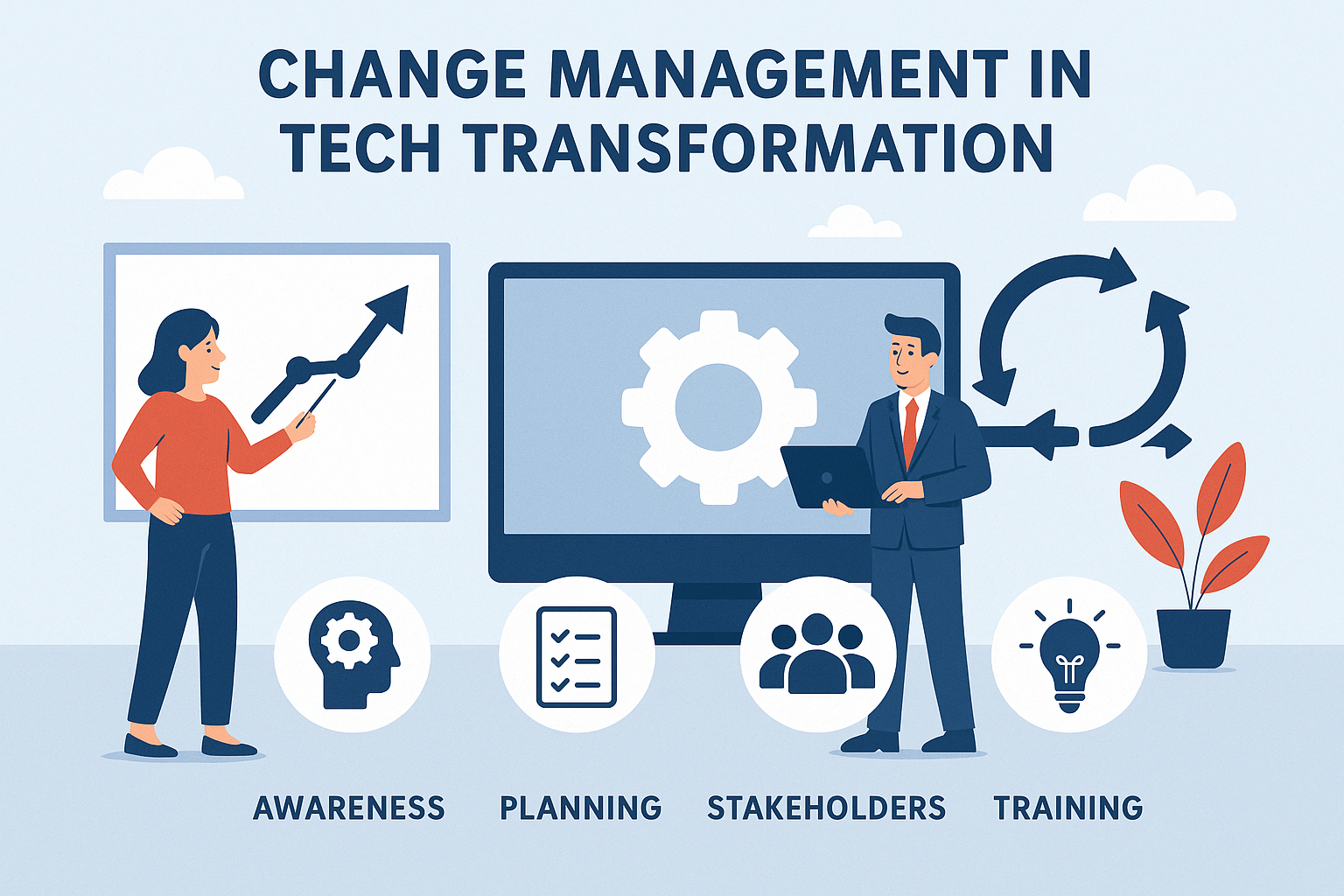Enabling Human Alignment in Digital Journeys
Why Change Management Matters
Tech transformation is more than just migrating to the cloud or adopting AI. It’s about changing how people think, work, and adapt. Without structured change management, even the best tools fail due to resistance, confusion, or cultural misfit.
Core Premise:
“Technology changes fast. People don’t—unless guided.”
The Human Side of Tech Transformation
Successful change means aligning three layers:
People – Mindset, motivation, and behavior
Processes – Routines, workflows, and policies
Technology – Tools, platforms, and architecture
Typical Barriers:
Fear of job loss or irrelevance
Poor communication of purpose
Lack of training and support
Leadership misalignment
Pillars of Change Management
1. Vision and Leadership Alignment
Clearly define why change is needed
Ensure execs model the new behaviors
2. Stakeholder Engagement
Map who’s impacted and involve them early
Use feedback loops to iterate and improve
3. Communication Strategy
Transparent, frequent, and tailored messaging
Answer ―What’s in it for me?‖ for every role
4. Training and Enablement
Upskill teams for new systems or processes
Provide hands-on learning, not just documentation
5. Measurement and Reinforcement
Track adoption KPIs (e.g., usage, satisfaction)
Reward and recognize early adopters
Change Management in Action
Microsoft 365 Rollouts: Firms that invested in user enablement saw 2x adoption rates compared to tech-only deployments.
SAP or ERP Migration: Change leaders used gamification and champions to reduce employee resistance by 40%.
Agile Transformation: Top-down and bottom-up coaching helped embed a culture of experimentation and iteration.
Conclusion
Technology won’t transform your business—people will. Change management ensures that digital initiatives land with clarity, confidence, and cohesion. It’s not an afterthought; it’s the engine that converts innovation into enterprise value.





